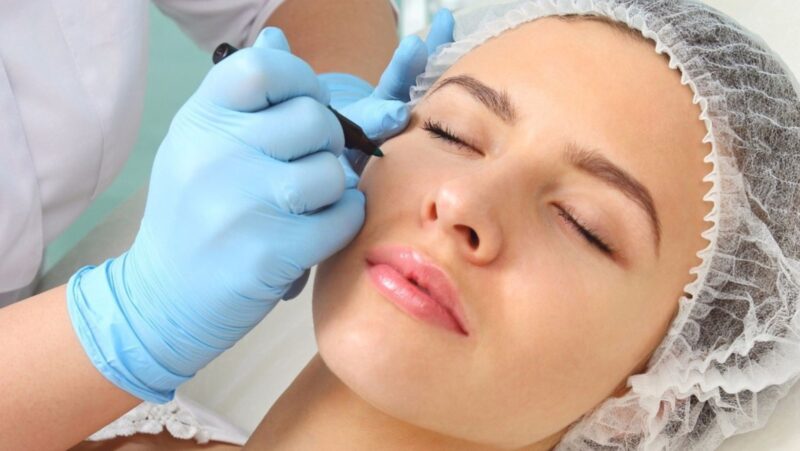
By Medical Writer, Jeannie Hill
Facial pain can be debilitating, but effective help is available. Often a multidisciplinary approach to facial pain treatment is needed.
Facial pain is often confusing to the patient. It can be difficult for the average person to identify because the face has a complex network of nerves, muscles, and joints, making it challenging to pinpoint the exact source of pain.
An Orofacial Pain Specialist is the best healthcare specialty to diagnose the issue because it can have many different root causes. Face pain can be complex since it is generated by issues in the face or teeth, problems in the nervous system, or referred pain from other sources. For example, trigeminal neuralgia (TN), which is often the cause of chronic facial pain on one side of the face, is easily mistaken for a dental abscess or migraine.
Orofacial pain providers start by helping patients understand the basics of their facial anatomy.
This includes:
Explaining that “TMJ” is an acronym for temporomandibular joint, which is a term representing the jaw joint
Pain in the TMJ pain is called TMD in the medical world, which is a TMJ disorder/dysfunction.
TMD pain impacts a person’s jaw. This encompasses the TMJ (joint), the associated jaw muscles (masseter, temporalis), and/or muscles of the head/neck and teeth that are commonly involved.
Treatment starts with a history of present illness, examination, and diagnosis. A TMJ patient can prepare for their initial consultation by taking notes and being ready to discuss their symptoms and answer questions.
- When did they first notice symptoms?
- Where is their pain located (right, left, or both sides)?
- What seems to trigger this pain (stress, poor sleep, etc.)?
- How severe is the TMJ pain level (mild, moderate, or severe)?
- What have you tried to do so far to minimize your jaw pain?
- Do you have other medical conditions?
- Are you taking any medications?
Facial Pain Diagnosis
1. Medical History and Physical Examination:
- Detailed Description of the Pain: The doctor will ask about the type of pain (sharp, stabbing, burning, aching), its location, duration, frequency, and any triggers that bring it on (touching the face, chewing, talking, temperature changes).

- Neurological Exam: This may involve testing facial sensation, reflexes, and muscle strength to assess nerve function.
- Overall Health Assessment: Your provider will ask about your medical history, medications, and any other symptoms to identify potential underlying conditions.
2. Possible diagnostic tests:
- Imaging Studies:
- Magnetic Resonance Imaging (MRI): Can help identify structural abnormalities in the brain, such as tumors, multiple sclerosis lesions, or blood vessel compressing the trigeminal nerve (a common cause of trigeminal neuralgia).
- CBT Scan: May be used if MRI is not possible, but it’s less detailed. It shows details of the face, teeth, sinuses, and jaw bones.
- Itero or Dexus scan: This is a digital impression of your teeth and gums. Instead of using a messy, uncomfortable putty to make molds of your mouth, a small wand takes thousands of pictures to create a highly accurate 3D model. Both Itero and Dexis are popular brands of intraoral scanners. They provide similar functionality, with slight differences in: image quality and accuracy, scanning speed, cost and specialty software features.
- Blood Tests: Can rule out infections, inflammation, or other systemic conditions.
- Physical Exam: To exclude dental problems as a source of pain.
- Specialized Tests: In some cases, more specific tests may be needed, such as:
- Electromyography (EMG): Measures muscle activity to assess nerve damage.
- Nerve Conduction Studies: Evaluate how well electrical signals travel along nerves.
3. Differential Diagnosis:
Your pain specialist will consider various possible causes of facial pain, including:
- Trigeminal Neuralgia: The most common cause of sharp, shooting facial pain.
- Atypical Facial Pain: Chronic, poorly localized facial pain with no clear cause.
- Temporomandibular Joint (TMJ) Disorders: Problems with the jaw joint.
- Headaches: Migraines, cluster headaches, and tension headaches can cause facial pain.
- Sinusitis: Inflammation of the sinuses may require the expertise of anENT specialist Singapore for proper diagnosis and treatment.
- Dental Problems: Infections, tooth decay, or impacted teeth.
- Neuralgia of other Facial Nerves: Such as glossopharyngeal neuralgia.
- Postherpetic Neuralgia: Nerve pain following shingles.
Facial Pain Treatment Overview
Most patients value understanding what treatments are possible. It is important that patients ask specific questions that are on their mind.
- Trigger point injections: They are a type of pain management therapy that involves injecting a local anesthetic into a trigger point to relax muscles, reset the knot, and reduce pain. An anesthetic injection is administered into an area of muscle pain to break up “knots” in the muscle to relieve pain.

- TMJ-specific injections: Commonly, these injections use steroids (Kenalog); they are inserted into the impacted TMJ area to address joint pain. Patients may experience soreness for a few days following injection treatment.
- Botox injections: Botulinum toxin injections are strategically placed into knotted, tense muscles to reduce tension within the muscles and reduce pain and headaches.
- Trigeminal nerve blocks: Injections commonly use anesthetic (Marcaine) and steroid (Kenalog) to lower nerve pain symptoms and associated headaches.
- Temporary oral appliances: They are typically effective in reducing TMD and sleep apnea stress. This may include a custom splint made of acrylic resin at your physician’s lab.
There are relatively rare causes of orofacial pain. The pain often stems from issues with the nerves, muscles, joints, or teeth, which are best assessed through the methods mentioned above (medical history, physical exam, imaging like MRI, etc.).
It’s important to remember that facial pain can have various underlying causes, and a thorough evaluation is necessary to determine the appropriate treatment. If your pain persists or is chronic, talk to your dentist, general physician, or better yet, a Pain Management Specialist.












